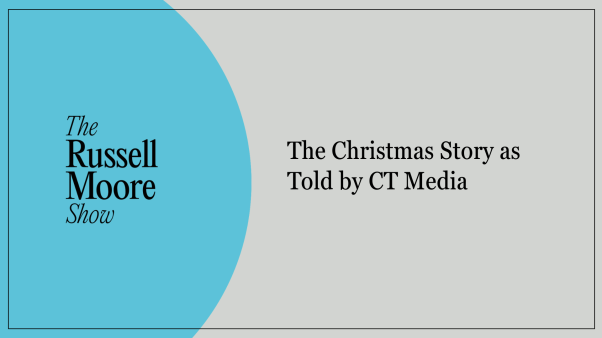The man at the microphone began to sob. “I’ve got to confess my critical spirit,” he said. “For years, I’ve griped and found fault with everything that went on in this church. The music, the sermon, the attitudes I perceived in others . . .” He searched for words. His grief was palpable.
“All this time, I thought the problems in this church were out there,” he said, pointing all around him. “God has finally revealed that the problem is in here,” he confessed while thumping on his chest. After several stumbling attempts, he asked in a barely audible voice, “Can you . . . will you forgive me?”
Three people immediately came forward, embraced the man, and knelt to pray with him. The pastor, long since resigned to tears, vocalized the congregation’s response: “We forgive you, John.” The next confessor stepped up to the microphone.
A scene from your favorite daydream? Close. It’s a snapshot from a solemn assembly.
What is a solemn assembly?
The Old Testament records at least twelve times when Israel’s leaders called the nation together for reflection, confession and repentance. These were usually predicated by judgment from God on the moral laxity and spiritual apathy in his covenant people.
Leaders of every period of spiritual awakening and renewal have used these examples as a template for restoring groups to a right relationship with God.
Today, church leaders have become reacquainted with the concept in books by Richard Owen Roberts, David Bryant, John Dawson, Tom White, and Neil Anderson. Several denominations now have staff trained to lead churches throught times of corporate repentance.
The solemn assembly has become a tool to heal and restore some troubled churches, as they come to terms with their destructive behavior, toleration of sin, and spiritual indifference.
When would a church need one?
Most often, when the church faces deep, spiritual problems. When Grant Adkisson was candidating at First Baptist Church of Pagosa Springs, Colorado, he received a visit from “Mr. Jones,” a powerful man in the congregation who had forced out at least two previous pastors.
Jones told Adkisson he would do everything possible to prevent him from being called as pastor, and he made good on his word. The night the church voted, dozens of inactive members who had not heard Adkisson preach came to vote against him.
When Adkisson still received a two-thirds majority vote, Jones filed a lawsuit on behalf of his family and friends, stating they were the true First Baptist Church of Pagosa Springs and demanded control of the property and assets.
The new pastor led the deacons and church into a process of church discipline, something they had never done before. They sought reconciliation and spent months trying to address wrongs, both real and perceived, among those who were involved in the lawsuit.
Finally, the church removed Mr. and Mrs. Jones from membership. This led to a second lawsuit against the pastor and deacons who had “run them out of the church.”
“Our solemn assembly was a response to this season of testing, asking God to protect us from bitterness, to keep us broken before him, and to guard us from anger and hatred toward those who were suing us,” Adkisson remembers. “We also honestly sought to know specific ways we had grieved those who had turned against us. In several cases, we identified ways the church had neglected them in a time of crisis or had not taken their ideas seriously. Unfortunately, our efforts to reconcile were dismissed.”
It was also a time for the church to seek wisdom about how to respond to the lawsuits. “Should we give up the building and move to a storefront? Was it right for us to fight it out in court? We wanted to honor God, even if it meant losing all our personal assets.”
Other churches, though, have held a solemn assemblybefore major problems broke out.
Rick McKinniss has served as pastor of the Kensington Baptist Church in Kensington, Connecticut, for almost ten years. During his first eight years, the church grew and went through significant changes.
“We were headed in the right direction,” he says, “but a divisive undercurrent would come up periodically. It was so subtle you really couldn’t even call it contention, just a constant annoyance. But we lived with a sense of unsettledness during most of that time.
“The other issue was mistrust between the congregation and the leadership. Their mistrust included me, but focused more on our deacons and elders. I couldn’t understand it, because we have as fine a group of leaders as any church our size in the country.
“Neither of these issues were obvious interferences to our growth, but both had the potential to wreak havoc. So we used the solemn assembly as a pro-active step rather than an act of desperation.”
How do we prepare for a solemn assembly?
Every church Leadership interviewed prepared with an extended period of teaching and prayer.
Village Chapel in Renton, Washington, had been asking God to reveal sin and renew their hearts toward him for several years. “We finally realized that nothing is discussed more and acted on less than prayer,” said senior pastor Russell Snyder. “We set aside a week for corporate prayer and fasting, shutting down every other ministry during that time.”
Rick McKinniss led his church to reflect upon congregational history. “We discovered four patterns of sin. One was an unbelief that limits God to staying within our expectations and comfort zones. Another was not welcoming people who were different. A third pattern revolved around authority—its misuse by leadership and a residue of distrust among the people. The fourth was critical speech against one another.”
McKinnis noted, “One result of these sins was that our church had lost almost two entire generations of young people. That realization really got people’s attention.”
So he preached for ten weeks on these specific issues as well as the concept of corporate confession. During those weeks, the church had three special prayer meetings. “By the time we got to the solemn assembly, the anticipation had been building. People were ready, I mean really ready. It was now something they owned.”
Grant Adkisson began with a lengthy sermon series, then preceded the assembly with twenty-one days of intensive home prayer meetings. That period culminated with three days of fasting.
What does a solemn assembly look like?
That varies for each congregation, but it always involves public confession of sin.
In Kensington, Connecticut, the assembly was a two-hour service of worship, Scripture reading, corporate and individual confession, repentance, and “the renunciation of strongholds.” McKinniss adds, “I had prepared a liturgy and we listed the corporate sins in a program. We concluded with a covenant of renewal, celebrating around the Lord’s table.”
Ron Owens, from the office of prayer and spiritual awakening of the Southern Baptist Convention, strongly urges congregations to conclude with a Communion service. “That’s what 1 Corinthians 11:28-32 is all about,” he says. “Corporate repentance is a prerequisite for participating at the Lord’s table. An article from the 1880s in The Georgia Record, the SBC’s oldest state newspaper, talked about a church preparing for weeks in anticipation of celebrating the Lord’s Supper. Christ gave us the Supper, in part, to facilitate regular, ongoing times of corporate confession.”
Grant Adkisson and his church leaders at Pagosa Springs chose to hold the solemn assembly on Saturday to allow as many people as possible to attend. “Although we didn’t take a head count,” he says, “almost every active adult member was present when we began at 8:00 a.m. Since we had prepared for months, and everyone was clear about why we were there, I didn’t preach. We didn’t sing. We went immediately to prayer.
“Then we invited people to speak. Some read Scripture they were certain God wanted them to read. We asked that if God had revealed sins they had committed against the church, they were to confess and repent. Most did this silently, but several confessed aloud.
“Then we asked for people to share what God had been saying about ways that we, as a body, had sinned. Several confessed sins against a former pastor. The church still owed him compensation. So we drafted a letter of apology on the spot, wrote a check for twice what people remembered owing him, and asked for his forgiveness. A secretary slipped out and put it in the mail immediately.
“Finally, after almost nine hours, we asked people to write down what they sensed God would have us do about the building and our assets. It was unanimous. Early on, everyone had thought the best thing would be to turn over the facilities and not fight it out. But sometime during the weeks of prayer or the time of fasting, God impressed upon us to retain ownership and allow him to do something significant. We left that evening with a great sense of joy and anticipation.”
What can we expect to happen long term?
The aftermath of a solemn assembly is as varied as the congregations that hold them.
One church in the Midwest had a dramatic response to the solemn assembly. The people repented for the inappropriate firings of four previous pastors. They sent letters to each former pastor, asking forgiveness for the pain the church had caused them.
But now, four years later, some old behavior patterns have returned. The new pastor sometimes wonders if his days are numbered.
Rick McKinniss, on the other hand, says his congregation experienced a new freedom in worship, and a greater acceptance of differing musical styles. “Our worship services have expanded from sixty minutes to over ninety minutes, just because people want to worship longer.” The church has also seen people come to faith in Christ, including people from occultic backgrounds. Two prayer meetings born out of the solemn assembly are still well attended.
“Our whole framework for decision making has changed,” says McKinnis. “We are out of space, and we called a twenty-four-hour fast to pray about this challenge. More than seventy people participated. We are seeking direction from the Lord before we act, and this is restoring trust in our leadership.”
The result of the solemn assembly in Pagosa Springs, Colorado, was even more dramatic. The assembly was held less than two weeks from the court date. Four days after the assembly, pastor Grant Adkisson got a phone call that the plaintiff, his wife, and teenage daughters had been in flight to another community and never arrived.
“We began to pray for their safety. We prayed on through the night. Then around daylight, we got another call that they had been found—and all aboard the plane had been killed.
“We were utterly crushed. God had so broken us that not one person expressed relief or was glad or vindictive. They had once been part of our church. One daughter’s Bible, given by a Sunday school teacher, was found at the crash sight. When we came together the next Sunday, it was a time of agonizing and weeping. And fear.
“Even the unchurched folks in the community were shook up. In a small town like ours, everyone knew what was going on. I had an old mountain man stop me in the post office and say in a loud, rough voice, ‘I hate that that family’s dead, but it taught me one thing. You better not mess around with God’s business or God will take care of things, won’t he, Preacher?’ “
“We went to court, and the suit was dismissed. The rest of the group associated with Mr. Jones started their own church on the edge of town. We continued to seek healing in those relationships. In some cases we were successful; in others, we were shut out.”
That was ten years ago. We asked Adkisson how it had affected the church longterm. “With so many new families, the memory has faded. I think we should have implemented an annual service, like the Passover, to remind us of how God moved in such a dramatic way. On the other hand, that congregation still has a depth of prayer and worship I’ve never seen elsewhere. But the price for all this was utter brokenness.”
Would a solemn assembly help our church?
Corporate repentance helps churches deal with past issues that affect present health and future direction. In cases where the solemn assembly was seen as an event, effects were short-lived. In congregations that used the service as the beginning of a new pattern of relating to God and one another, the transformation has sometimes been dramatic.
Where can we learn more?
A workbook from the national prayer conference on solemn assembly can be ordered from the Baptist Sunday School Board at 800-458-2772. A brochure by Richard Owen Roberts is available from International Awakening Press at 708-653-8616. Books include Setting Your Church Free by Neil Anderson (Regal, 1994), Healing America’s Wounds by John Dawson (Regal, 1994), Concerts of Prayer by David Bryant (Regal, 1984), and Breaking Strongholds by Tom White (Vine, 1993). To contact people mentioned in this article, see the directory on page 127.
Ed Rowell is assistant editor of Leadership.
1996 by Christianity Today/LEADERSHIP journal
Last Updated: September 17, 1996









